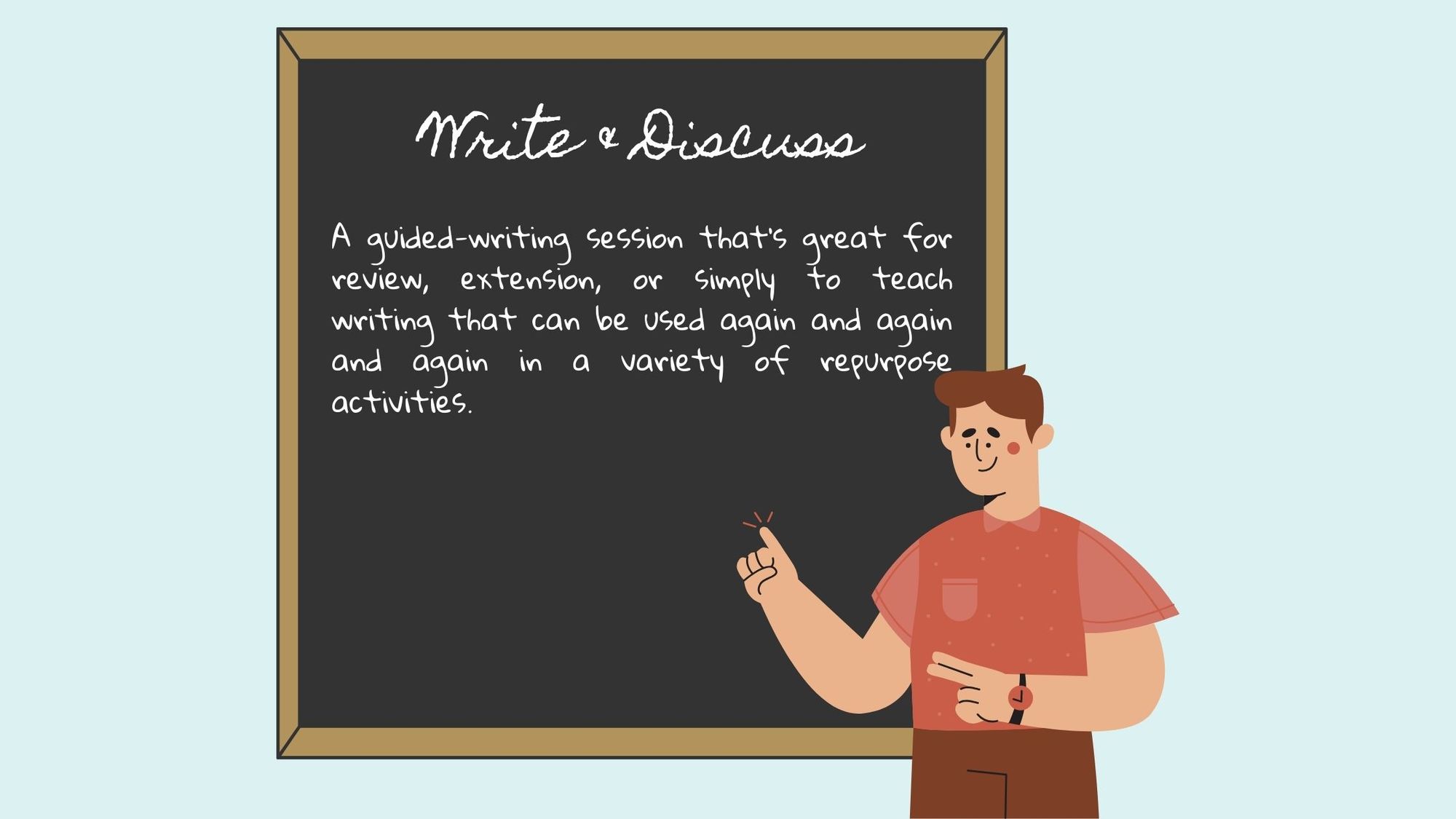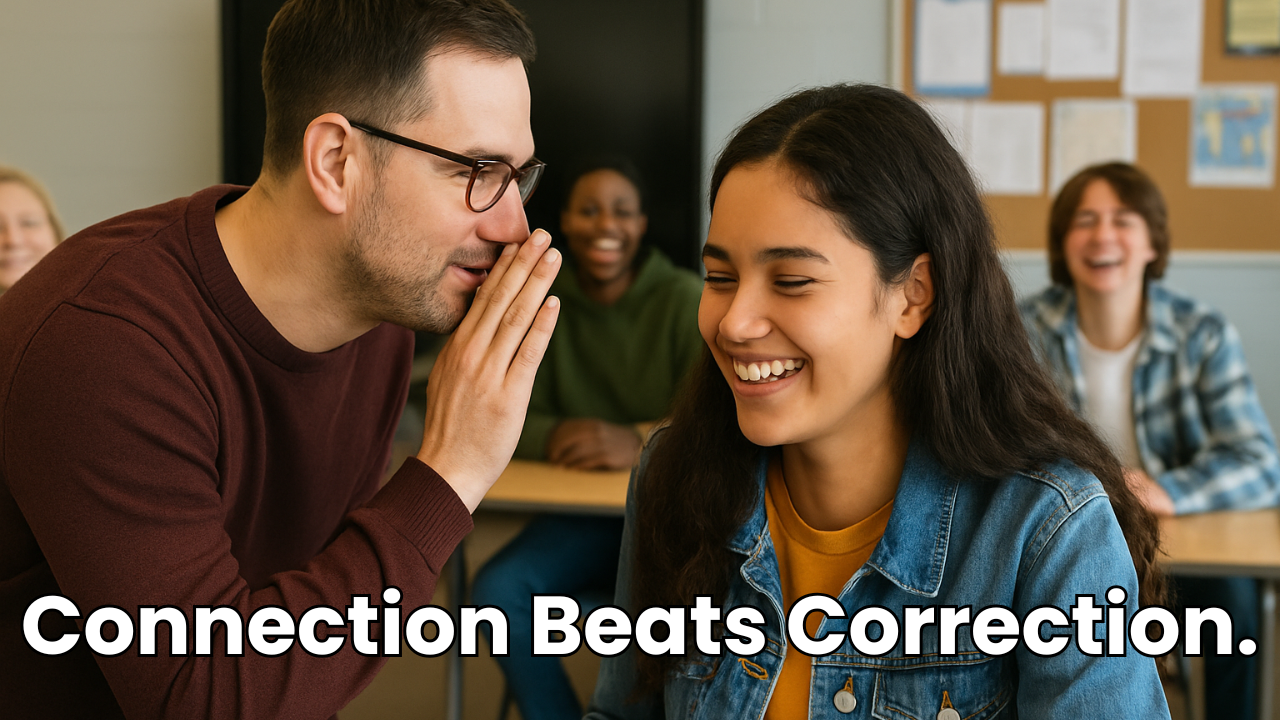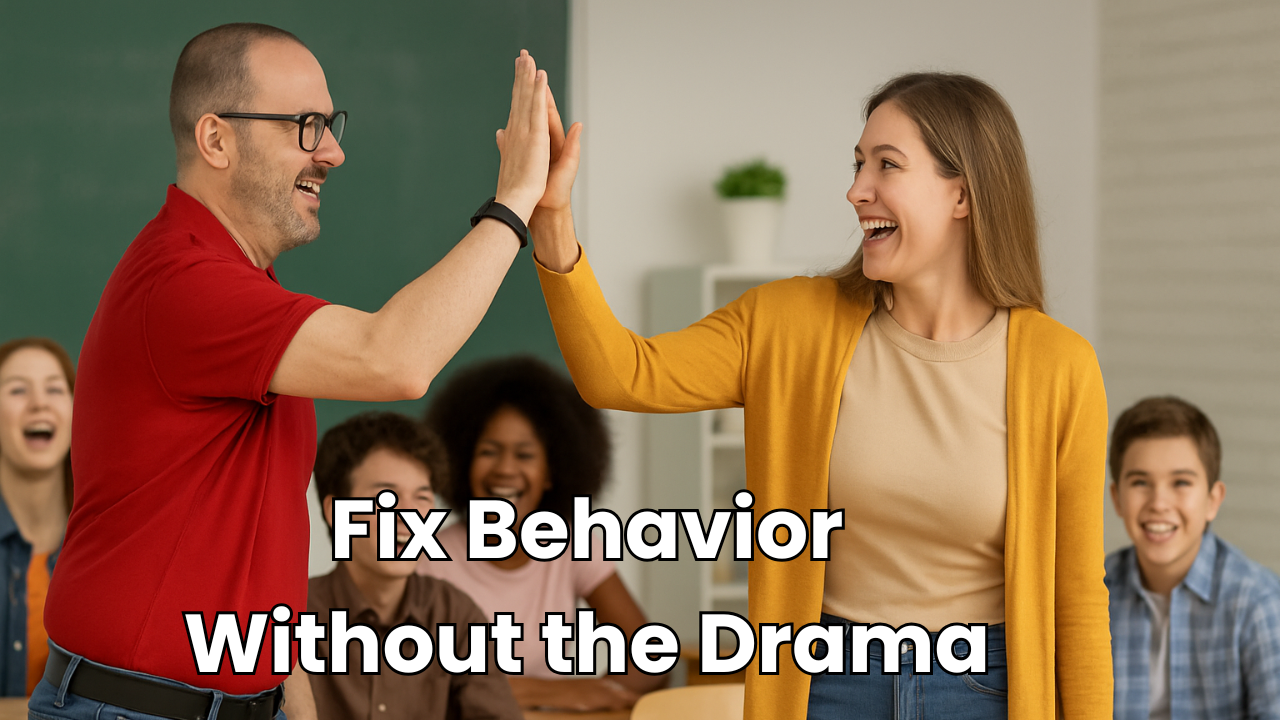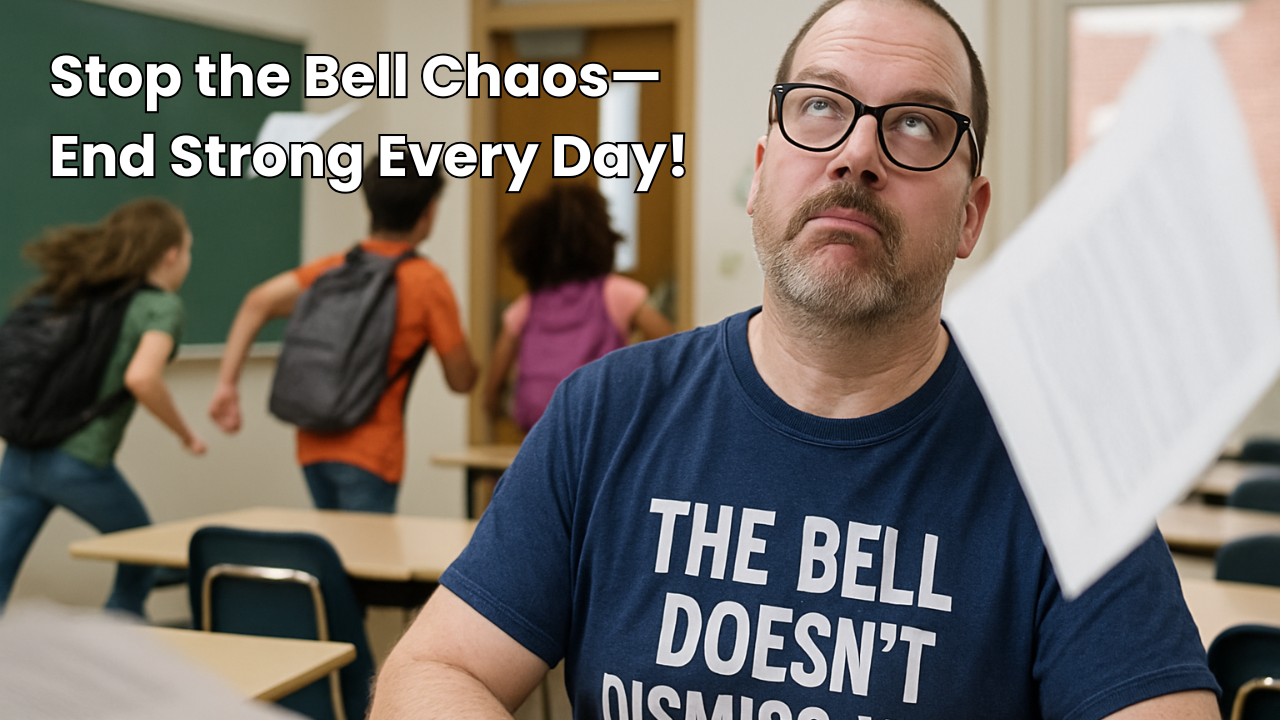
One of my favorite activities to do in class is called Write & Discuss. I'm not sure who invented it, but I think it may have been Tina Hargaden or Mike Peto, so I cannot take credit, but it's an activity that I do at least once a week. I love it because it's so versatile, requires little to no planning, and can be used in conjunction with so many other activities that I do in my classroom.
What?
Write & Discuss is basically a guided-writing session.
You guide your students to create sentences in the target language, as these sentences are formed, you will write them on the board or project them on the screen, and your students will copy them down into their notebooks.
Write & Discuss is great for reviewing a story, movie talk, picture talk, reading, special person interview, novel chapter, discussion, or just about anything you do in class.
It can also be an extension of a previous activity by writing a new ending to a story, reading, or movie talk, writing what happens before the story begins or after it ends, or writing a side story that branches off of the main story. There are so many ideas and possibilities.
I also love it to simply teach writing. I talk through my thought process as we write down the sentences, any grammar or language things that come up, and ask them questions about the formation of sentences to get them to "feel" what is right rather than apply a specific rule. My dialogue with them might start off as something like, "We're going to be writing a story. The first thing we need to do is create a character. What kind of character do you want?" If I were teaching German I might say as we write a sentence down, do you see how the verb goes to the end of the sentence after the word 'because'?" Or if I were teaching Spanish, I might ask, "What sounds better, 'el grande perro' or 'el perro grande'?" So by asking the right questions and discussing the process as you go, you can see how powerful Write & Discuss is as an activity to teach how to write.
And lastly, I love Write & Discuss because it can be used again and again in a variety of repurposing activities. I highly suggest that instead of you writing by hand on your board, that you type it up and project it on a screen. If you write it in a Google or Word doc, you will have a digital copy that you can share with any students that are absent, but that's not all. You can use this digital copy for so much more.
You can print multiple copies and put them in a sheet protector to include in your class library for silent reading. These are perfect, at-the-students'-level readings that can be used even at the beginning of the year in level 1!
You can cut up the sentences and have your students put them back together in small groups.
You can use them for class readings for other classes. Since you've done this with all of your classes, you have 5 or 6 different stories. Trade them up and you have at least 4 or 5 supplemental readings for each class!
You can send them home with students and have them read and translate them for their parents or guardians. This is a GREAT way to advertise your class and let students' families know what you're doing in class.
You can have students re-read them and illustrate the story.
You can have students write derivative stories from the original.
You can file them away and use them for assessments for another school year.
You see, there are so many different re-purposing possibilities. I've just scratched the surface. If you have any other ideas, please share them in the comments!
How?
Write & Discuss requires little to no planning whatsoever.
Get your laptop out, open a Google or Word doc, increase the font size to 24, and let your kids know what you're going to do. Are you going to review a story or a reading? Are you going to write a summary of a novel chapter? Are you going to co-create a story together? Whatever you're going to do with your class, let them know so they can get into the right frame of mind.
You'll then start asking questions in the target language that lead your students through the process. If you're reviewing a story or a reading, ask what happened first. If you're writing a summary of a novel chapter, ask the chapter number and title of the chapter to start. If you're going to co-create a story, ask what kind of character are you going to have.
All of these questions will get the ball rolling. You'll listen to the answers allowing as many students to participate as possible. You can ask individual students or the class as a whole. I like to ask the class as a whole to get initial ideas, but then ask 3-5 additional students what they individually think. This way I can hear from some of the more quiet kids who usually don't speak up or can't be heard over the rest of the class.
As you gather the ideas, you'll write them in a coherent sentence in your doc. Students will copy the sentence down in their notebooks, BUT not until AFTER I punctuate the sentence, just in case I want to make changes after I initially write it down.
Go slowly through this process or your students will get frustrated. They can't handwrite as fast as you can type. I usually write a few sentences and then pause to let them catch up.
You can also have students type out the story on their devices. If I let them do this, I teach them how to type in the target language. I show them how to change their keyboards over to the target language and where the special letters are (you can Google how to do this for clear instructions). Some students prefer to type and others handwrite. I don't generally care which they choose, but if they do choose to type, they must change their keyboards over and type in the target language properly.
You'll continue asking leading questions to continue with the review or the summary or the story. When you get the next idea, you'll write it down and students will copy.
If we're writing a story or a specific type of writing like a letter or a persuasive essay, I like to talk about the process as we go. It's a little metacognition that helps them learn how to do the type of writing we are doing. So if it's a story, I'll say we first need to introduce a character and we do that. Then I'll say we need to describe the character and we do that. Then I'll say the character needs a problem and we figure one out. Or if it's a letter, I'll ask questions like how to we address a formal letter. How do we close a formal letter? Or for a persuasive essay, I follow the acronym our language arts classes use: RACE. First we restate the question, then we answer the question, then cite the evidence, and finally explain the evidence. You get the idea. We talk about the process so that students can think about what they are doing and how they are doing it.
It may take two or more days to complete a more lengthy Write & Discuss or only a few minutes if it's just a quick review of a lesson. It takes as long as it takes and I don't rush it because of time constraints.
When?
With only 45 minutes of class time, I never seem to have time to do a Write & Discuss at the end of class, but I know many teachers who prefer to summarize the day's lesson in the last 5-10 minutes of class. If that works for you, great!
For me, because of my short class periods, I like to do my Write & Discuss the next day after an activity. Or sometimes, even as the main lesson of the day.
For novel summaries, sometimes I do the Write & Discuss summary chapter by chapter or I may wait until Friday and spend the whole class period doing a Write & Discuss covering what we've read since the last Write & Discuss.
At the very minimum, I like to schedule a weekly Write & Discuss as a regular part of my lesson cycle. This way it gives students a tangible product of their weekly learning and instead of having them do useless worksheets.
The point here is that it doesn't necessarily matter when you do your Write & Discuss; what's more important is that you do them and that you do them regularly.
Next Steps
Once you've completed your Write & Discuss with your class there are plenty of things you can have students do to extend the activity.
You can have students take their copy home, read, and translate it for a family member. This does a few great things. First, it's re-reading of a familiar text. Re-reading is always a great activity. Second, it shows off to the family member what the student is doing in class. And third, it gives the student confidence as they read and translate the text.
Simply retelling a story is a low-level Bloom's-Taxonomy activity, but having students create and write what happens before the story started or after it ended is at the top of Bloom's. It allows students to use their knowledge of the story and the language along with their own personal creativity to create something new and different.
Similar to writing what happens before or after a story, writing a new ending is also high up on Bloom's Taxonomy. Students love to show what they know and how creative they are and this is a great way to let them do that.
Another great extension activity is to give them a copy of another class's Write & Discuss and to create a list of things that are the same and things that are different. This puts the brain in high gear as they put their higher-order-thinking skills to the test.
Another great go-to activity is a sentence scramble. You can cut the sentences up into strips and have students put them back in order in small groups. It's another way to get students to re-read the text without telling them to just re-read it— which never works!
Do you have any other ideas on how to extend this activity? Share with us in the comments!
Pro Tips
As you do your Write & Discuss, here are some Pro Tips to keep in mind!
Go slow. Remember most students are handwriting as they are copying and they cannot copy as fast as you can type. Plus, there's no rush needed. Take your time and milk the activity for the powerful input tool that it is. If you don't finish that class period, there's always another day.
Add dialogue. Adding dialogue is a great pro tip. It does so many things at the same time. First, it livens up your story or writing. Dialogue breaks up the prose and can show how the characters interact with each other. Second, it shows them how writing dialogue in the target language is different than in their home language. For example, in Spanish, they use the colon followed by a long dash instead of a comma and beginning quotation mark. In German, they use an initial quotation mark that is lower than the final quotation mark that is in a higher place. Showing by example is the best way to teach these types of differences. And finally, it teaches them verb conjugations is a more natural way. As dialogue requires you to switch between different forms of the verbs, students can see how this is done in a natural way in context, instead of memorizing verb conjugations in a list of words.
Be sure to include short, medium, and long sentences. I hear from a lot of teachers that their students never speak or write in longer sentences. I then ask them how often they use longer sentences with their students and they say almost never. If you don't give students examples of longer sentences, how do you expect them to learn how to make them? I often will start with a short, choppy sentence for my slower processors and then recombine those short sentences into longer and longer sentences to give examples for my stronger students. When you do your own Write & Discuss, be sure to include short sentences for those students who are still at that level of comprehension, medium sentences for the majority of your students, and long more complex sentences for your high-flyers. This is a simple way you can differentiate for all the students in your class.
Lastly, point out any special features of the target language as you go. If your language does something different than the student's home language, then point it out. For example, adjectives go after nouns in Spanish or main verbs go at the end of subordinate clauses in German. Now don't use all the language mumbo-jumbo. Explain it in a way that kids will understand, but you get the idea.
Repurpose
As teachers, we all work very hard, so why not work smarter instead of harder? Repurposing things that we create in our classroom is not only efficient but smart and Write & Discuss is so versatile that it can be repurposed in so many different ways.
As I've said before, it makes your life a whole lot easier if you type your Write & Discuss as you go. This way you will have a digital copy that you can easily repurpose in so many different ways.
First of all, you have a digital copy that you can share with students, especially any absent students.
You can also print out multiple copies, laminate or put them in sheet protectors and add them to your class library for additional reading material for silent reading.
You can use them as a source for running dictation. This is a great activity to get your student up and running while using the language. I've linked to Martina Bex's explanation of the game.
You can file your Write & Discuss away and use them as assessments for future classes. Obviously, you can't use them for the current year, but keeping a collection of them gives you a ton of stories to draw from to create listening and reading assessments.
You can scaffold them for your slower processors using Laurie Clarcq and Michele Whaley's Embedded Reading. Embedded Reading is where you write multiple versions of the same text starting with the most basic version and adding sentences as you go. This is a great resource for your slower processors because they can read the most simplified version first to get the gist of what's going on and read each subsequent version gaining a few more sentences each time. It's also a great activity to differentiate in your classroom with little effort. You can give each student a packet of the embedded reading and have them start with the first version they can read that's only very slightly challenging. Some will start at the beginning, some in the middle and some might be able to read the final version right away.
And one of the best things to do with your Write & Discuss is to collect them all from a class throughout the year and publish a class anthology at the end of the year. This is a great way to show the body of work you and the students have created throughout the year as well as have something to add to your classroom library.
These are just some repurpose ideas. Please share any others you may have in the comments.
So there you have it, Write & Discuss. What do you think of this activity? Have you done it in your classroom? If not, are you excited to try? Let us know in the comments.
And click the link below to get your very own Write & Discuss cheatsheet to use throughout the year!



